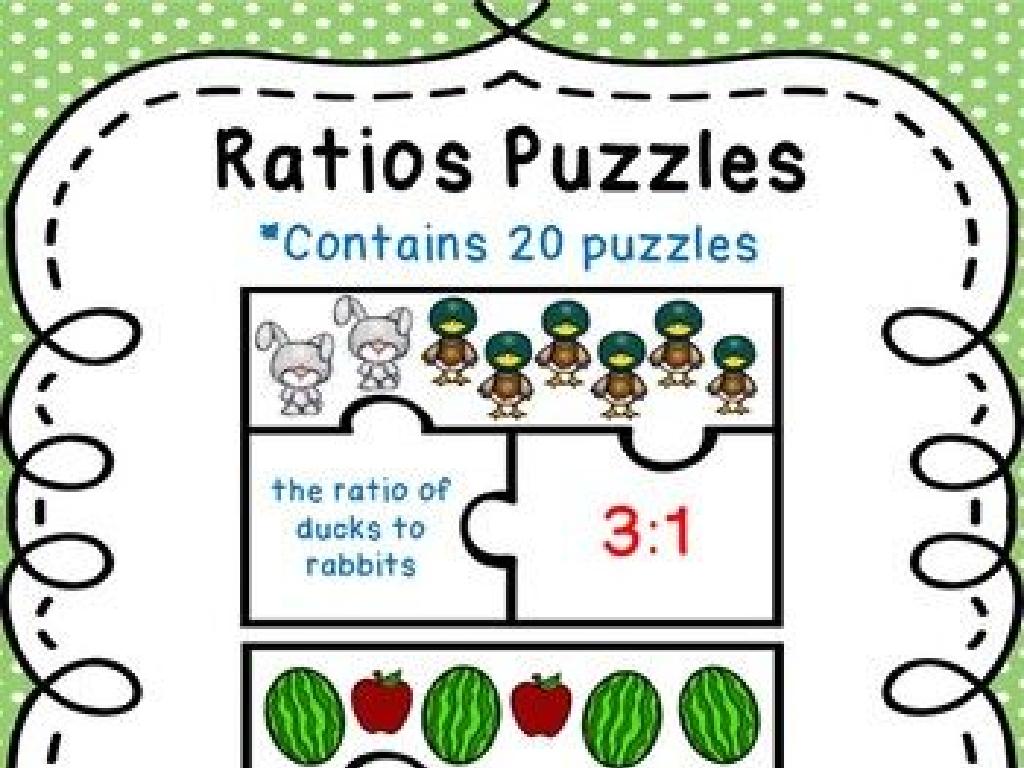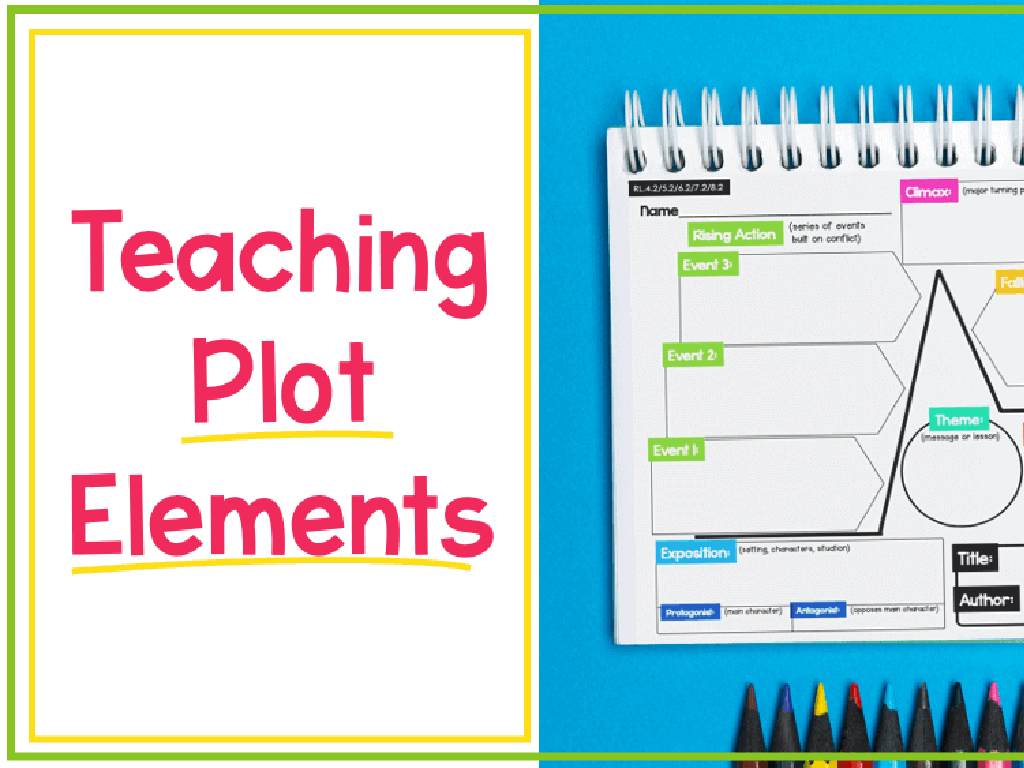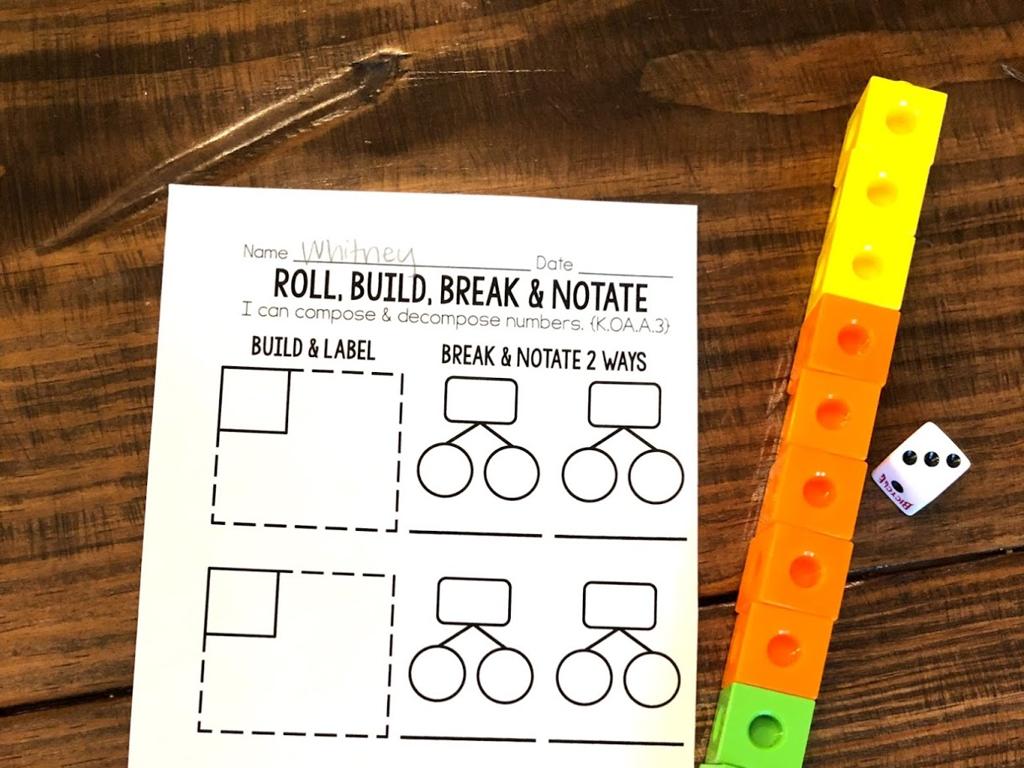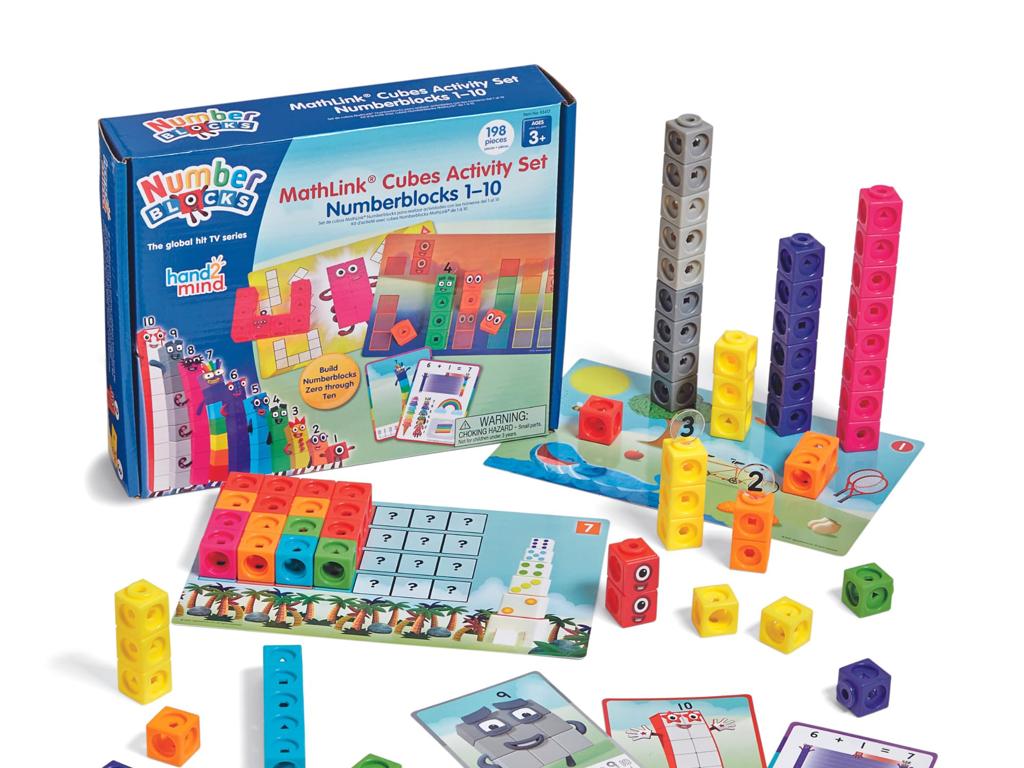Choose The Best Concluding Sentence
Subject: Language arts
Grade: Fourth grade
Topic: Organizing Writing
Please LOG IN to download the presentation. Access is available to registered users only.
View More Content
Crafting the Perfect Ending: Concluding Sentences
– Understanding the role of a conclusion
– A conclusion wraps up your ideas and gives a sense of closure.
– Characteristics of a strong conclusion
– It should summarize main points, reflect on the topic, and leave a lasting impression.
– Examples of concluding sentences
– ‘In summary, caring for pets teaches responsibility and compassion.’
– Tips for writing your own conclusion
– Use what you’ve learned to write a conclusion that shines!
|
This slide introduces the concept of concluding sentences and their importance in writing. A good conclusion is crucial as it wraps up the text and leaves the reader with a final impression. It should summarize the main points without repeating them exactly, reflect on the topic, and provide a sense of closure. Provide examples of effective concluding sentences and encourage students to think about what they want their reader to remember. Instruct them to try writing their own concluding sentences, using the tips provided. This exercise will help them understand how to effectively end their writing pieces in a way that resonates with the reader.
Crafting a Strong Conclusion
– What is a conclusion?
– The end part of your writing piece.
– Conclusions wrap up your thoughts
– They summarize and reflect on the main points.
– It’s your final impression
– Your last opportunity to affect the reader.
– Conclusions are powerful endings
|
This slide introduces students to the concept of a conclusion in writing. Explain that a conclusion is like saying goodbye; it’s the last part that summarizes the story or essay and leaves the reader with something to think about. Emphasize that a good conclusion wraps up the main ideas and reinforces what was said, making the writing feel complete. It’s also the writer’s final chance to leave an impression, so it should be memorable. Encourage students to think about how they feel when they read a good ending and to strive to create that feeling with their own writing.
Crafting a Strong Conclusion
– Restate your main idea
– Begin with what you wanted to tell in your writing
– Summarize your key points
– Pick the most important things you talked about
– Leave the reader thinking
– Ask a question or give a final interesting fact
– Ensure a complete finish
– Your ending should tie back to the beginning
|
When teaching students about writing a good conclusion, emphasize the importance of circling back to the main idea or thesis to remind readers of the central theme. Summarizing the main points helps to reinforce what was discussed and ensures that the reader can recall the key aspects of the writing. Encouraging students to leave the reader with something to think about, such as a question or a thought-provoking statement, makes the conclusion memorable. Lastly, stress that a conclusion should provide a sense of closure without being abrupt, linking the ending to the introduction to give a satisfying finish to the piece. Have students practice by writing conclusions for sample topics and discussing the effectiveness of each other’s work.
Crafting Strong Concluding Sentences
– What makes a good conclusion?
– Example 1: Benefits of daily exercise
– ‘In conclusion, daily exercise can help improve your overall health and well-being.’
– Example 2: Recycling’s positive impact
– ‘Therefore, it’s clear that recycling benefits both the environment and our community.’
– Analyzing effective conclusions
– Look at how these wrap up the main ideas clearly and leave a lasting impression.
|
This slide aims to teach students how to effectively end their writing with a strong concluding sentence. Start by discussing the purpose of a conclusion, which is to summarize the main points and leave the reader with a final thought. Use the provided examples to illustrate how a concluding sentence encapsulates the essence of the preceding paragraphs. Example 1 emphasizes the importance of daily exercise, while Example 2 highlights the advantages of recycling. Encourage students to notice the use of ‘In conclusion’ and ‘Therefore’ to signal the end of the discussion. Discuss with the class what makes these conclusions effective: they restate the main idea in a new way, they summarize the key points, and they leave the reader with something to think about. Have students practice creating their own concluding sentences in a similar manner.
Practice Time: Crafting Conclusions
– Read the given paragraph
– Choose the best conclusion
– Pick from the provided sentences
– Discuss your choice with a partner
– Share thoughts and listen to your partner
– Explain why it’s the best
– Understanding the paragraph s main idea helps
|
This activity is designed to help students understand the importance of a strong concluding sentence in a paragraph. It will allow them to practice reading comprehension and critical thinking skills. Students should read the paragraph carefully, then select what they believe is the most fitting concluding sentence from the options provided. After making their selection, they will pair up with a classmate to discuss their choices and reasoning. This peer discussion will help them articulate their thought process and understand different perspectives. The teacher should circulate the room, listening to discussions and providing guidance as needed. Possible concluding sentences for the teacher to prepare could include ones that summarize the main idea, reflect on the information presented, or offer a final thought that ties back to the paragraph’s topic.
Let’s Write Our Own Ending!
– Pick a topic you enjoy
– Write a short paragraph
Write about why you like it and what’s interesting about it.
– Craft a strong conclusion
Your last sentence should wrap up your thoughts nicely.
– Share with the class
Be ready to read your paragraph to your friends!
|
This activity is designed to help students practice writing cohesive paragraphs with a clear concluding sentence. Encourage them to choose topics they are passionate about to foster a genuine interest in the writing process. Guide them to develop a short paragraph that includes a beginning, middle, and end. Emphasize the importance of a concluding sentence that summarizes their main points or provides a final thought. After writing, students will have the opportunity to share their work with the class, which will help build their confidence in writing and public speaking. Provide feedback on their conclusions to help them understand what makes a strong, summarizing statement.
Class Activity: Concluding Sentence Gallery Walk
– Display paragraphs on the classroom walls
– Walk around and read classmates’ paragraphs
– Vote for the best concluding sentences
– Discuss what makes them strong
– Look for sentences that wrap up the ideas well
|
This activity is designed to engage students in peer review and to understand what makes a strong concluding sentence. Before the activity, guide students on how to write a good concluding sentence that summarizes their paragraph or gives a final thought. During the gallery walk, students will move around the room to read their classmates’ work displayed on the walls. Provide each student with sticky notes or a small piece of paper to vote anonymously for the paragraph they believe has the best concluding sentence. After voting, lead a class discussion on the qualities of the chosen sentences. Encourage students to explain their choices and discuss the elements that make a concluding sentence effective. This will help them to critically analyze writing and apply these skills to their own work.
Review and Reflect: Concluding Sentences
– Recap on concluding sentences
– Concluding sentences wrap up our ideas neatly.
– Importance of conclusions
– They leave the reader with a final thought and complete our writing.
– Share a takeaway for next time
– Think of one thing about conclusions that you’ll use in your next essay.
|
This slide aims to consolidate the students’ understanding of concluding sentences and their significance in writing. Begin by asking the students to summarize what they’ve learned about concluding sentences. Emphasize that a strong conclusion is crucial as it’s the last thing the reader remembers and it ties all the ideas presented together. Encourage students to reflect on the lesson and share one aspect of writing concluding sentences that they found particularly memorable or useful. This reflection will help them internalize the concept and apply it in their future writing tasks. The sharing process also allows for peer learning as students can learn from each other’s insights.
Homework Challenge: Craft Your Story!
– Write a story about your favorite animal
– Include a strong concluding sentence
– It should summarize your story or give a final thought
– Concluding sentences wrap up your ideas
– Think: What message do you want to leave your reader with?
– Share your story in our next class!
|
This homework challenge is designed to help students practice their writing skills, specifically focusing on the importance of a strong concluding sentence. A concluding sentence should effectively summarize the main points of the story or provide a final thought that leaves an impression on the reader. Encourage students to think about what they want their reader to feel or think at the end of the story. In the next class, students will have the opportunity to share their stories, which will help them develop their public speaking skills and allow them to see different writing styles and conclusions from their peers.






